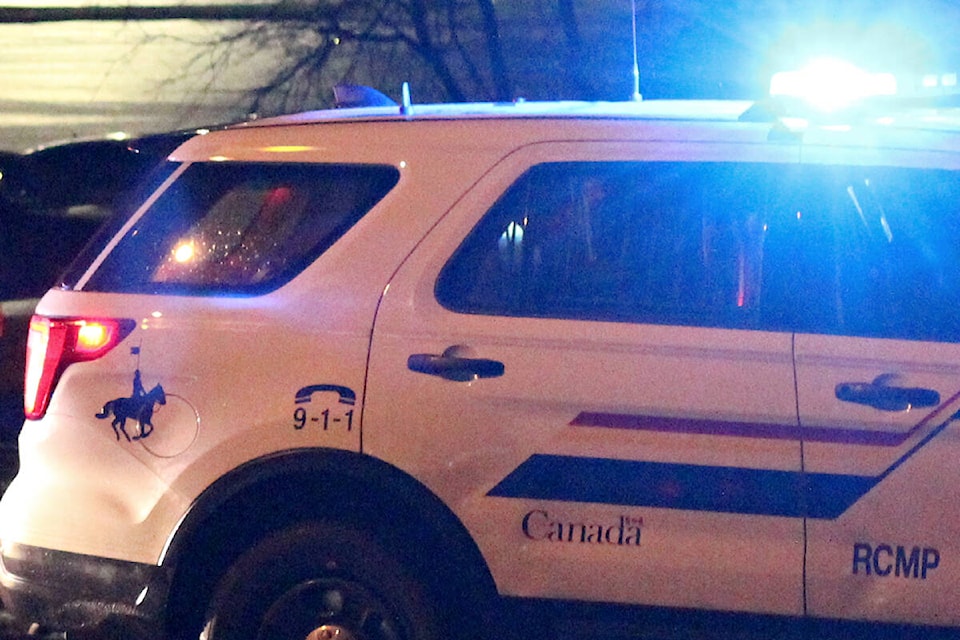Nanaimo residents in the downtown and surrounding areas feel that crime is increasing and don’t feel safe walking around after dark, according to a series of neighbourhood safety audits.
Nanaimo Community Policing recently released six safety audits covering downtown, the south end, the Old City Quarter, Harewood, and the Newcastle and Brechin Hill neighbourhoods. The project was a partnership with the City of Nanaimo and Vancouver Island University criminology students, and about 750 residents and business owners were “directly engaged,” noted community policing.
In all six neighbourhoods audited, a majority of survey participants said they believed the crime rate was increasing. The highest percentage was among Newcastle residents, 84 per cent of whom felt that way, while 54 per cent of south end residents observed an increase. In the other four neighbourhoods, 61-69 per cent felt crime was increasing.
Downtown residents are most reluctant to walk around at night, with 72 per cent saying they would feel unsafe, but a majority of respondents in all six neighbourhoods reported feeling unsafe walking after dark.
Newcastle residents were most dissatisfied with their overall level of safety, with 64 per cent saying they were dissatisfied or very dissatisfied. Downtown (59 per cent), south end (57 per cent) and Harewood (51 per cent) were other neighbourhoods in which a majority of respondents were dissatisfied with their overall safety. A majority of respondents in the Old City Quarter (72 per cent) and Brechin Hill (61 per cent) were satisfied with their overall level of safety.
Christy Wood, Community Policing coordinator, said neighbourhoods were pleased to participate in the audits to have their voices heard in a more formal way.
“I think everybody is feeling that frustration and that helplessness right now – this is happening in cities all across Canada,” she said.
All six neighbourhood safety audits included statistics provided by Nanaimo RCMP that showed criminal incidents trending upward, but reporting methodologies changed in 2019, making it challenging to identify long-term trends.
“Some of the dramatic increase in these [crime statistics] categories is likely attributable to changes in the ways in which incidents are classified … and may not be entirely reflective of an increase in the actual number of these types of incidents,” noted one of the audits, while other audits noted that the willingness of residents – including Block Watch members – and businesses to report certain types of incidents is another factor.
Wood said the crime stats are a useful tool that helps round out the picture of neighbourhood safety.
“Having that and then doing the interviews with the neighbours, talking about what’s normal, what’s not normal, doing the online surveys, it really nicely provides some layers for us,” she said.
The six neighbourhoods reported various safety concerns, but there were common themes such as “the public disorder correlated with the drug, mental health, homelessness and housing crisis,” which was cited in all six audits.
In the downtown, many respondents pointed to “a high prevalence of homeless individuals and drug users in the area” contributing to safety concerns, while in Harewood, residents reported seeing “pressures from the downtown core spill into their neighbourhood.” In Newcastle, there was frustration about crime, much of it witnessed first-hand according to the audit, and residents said crime increased after a temporary supportive housing site opened on Terminal Avenue. South-end residents expressed concerns about suspected drug houses.
“The residents feel that the problem will only be exacerbated once [permanent] supportive housing developments are operational,” the audit noted. “There are some concerns that those living in the supported new housing development, as being some of our most vulnerable citizens, will be targeted by these drug-selling houses.”
Vacant properties around the downtown and south end are another safety challenge, noted more than one of the audits, as “vacant lots indicate a lack of control within neighbourhoods and these types of environments are subject to criminal activity, prostitution, drug use and the sale of drugs.”
General perceptions about the downtown being unsafe or dangerous perpetuates community safety challenges there, suggested one of the audits.
“A negative reputation means that less people will come downtown and that reduces safety by limiting natural surveillance and a general sense of care and ownership of the space,” the audit noted.
READ ALSO: Crime in Nanaimo leads to ‘explosion’ of interest in Block Watch
Residents offered a range of opinions on approaches that should be taken by law enforcement and levels of government.
“A significant portion of the sample believed that a greater RCMP presence in the area would reduce the prevalence of crime and improve feelings of safety,” one of the audits noted. “Many others favoured alternative measures to this, including offering more support services to homeless and addicted people, and working to address the root causes of these issues.”
Some of the recommendations of the audits included more Block Watch membership and Community Policing patrols, more education around reporting criminal and nuisance activity, block parties and work parties, and crime prevention through environmental design.
Wood said there are opportunities for Community Policing to expand its patrols around the city. The program has about 45 active volunteers, she said, enough for more shifts during which they can report suspicious activity, crimes and things like graffiti and new homelessness encampments.
One of the next steps will be sharing and discussing the recommendations with neighbourhood associations to find out what sort of crime prevention work they’re interested in partnering on.
“It’s really important that the neighbourhood is behind the work we are doing,” Wood said.
READ ALSO: Safety audits will study effects of crime on Nanaimo neighbourhoods
READ ALSO: Residents, business owners vent frustrations over Nanaimo crime and drug activity
editor@nanaimobulletin.com
Like us on Facebook and follow us on Twitter
